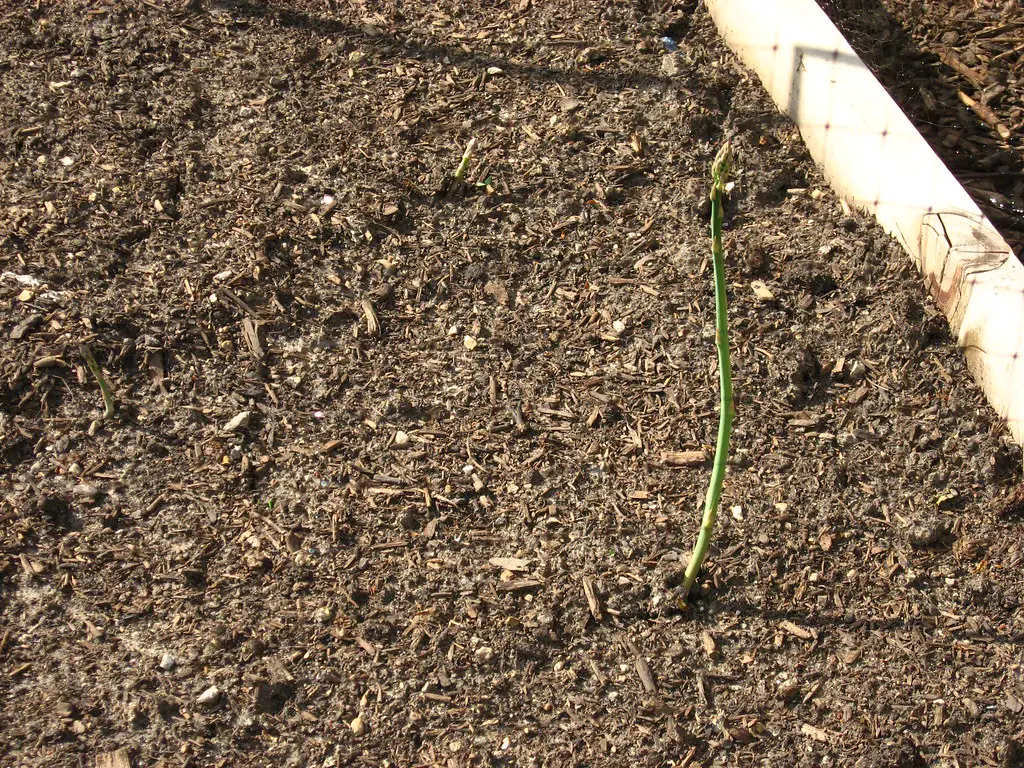Asparagus is a perennial vegetable known for its distinctive spear-like shoots that emerge in the spring. It’s a highly regarded delicacy in culinary circles, prized for its unique flavor and tender texture. The plant itself is an intriguing one, growing from a central crown and producing fern-like fronds that extend outward.
Originating in Europe and parts of Asia, asparagus has been cultivated for over 2,000 years. Its cultivation requires attention to detail and patience, as it takes several years for the plants to mature enough to harvest. However, once established, an asparagus bed can produce for up to 15 to 20 years, making it a long-term investment in the garden.
In addition to its culinary value, asparagus offers nutritional benefits. It is low in calories and a good source of vitamins A, C, and K, along with folate. Its unique flavor and nutritional content have made it a popular vegetable across various cultures and cuisines.
| Attribute | Details |
|---|---|
| Common Names | Garden Asparagus |
| Botanical Name | Asparagus officinalis |
| Family | Asparagaceae |
| Plant Type | Perennial Vegetable |
| Mature Size | 3-5 feet |
| Sun Exposure | Full Sun |
| Soil Type | Well-drained, Sandy Loam |
| Hardiness Zones | 4-9 |
| Native Area | Europe, Western Asia |
Asparagus Care
Caring for asparagus requires an understanding of its growth cycle and specific needs. It starts as a crown that develops into full-grown plants with fern-like appearances. The initial years are crucial as the plants establish themselves; this period requires proper planting, watering, and fertilizing.
Given the right conditions and care, asparagus can be a rewarding and long-lived addition to the garden. It demands attention during its establishment phase but requires less maintenance as it matures, yielding delicious spears each spring.
Light Requirement for Asparagus
Asparagus thrives in full sun, and a minimum of 8 hours of sunlight per day is essential for healthy growth. The location should be chosen with care, ensuring that the plants receive adequate sunlight throughout the growing season.
Soil Requirements for Asparagus
Asparagus prefers well-drained, sandy loam soil rich in organic matter. The pH should be slightly acidic to neutral, ranging from 6.5 to 7.5. Proper soil preparation before planting is vital for a successful asparagus bed.
Water Requirements for Asparagus
Consistent watering is crucial, especially during the first two years. The soil should be kept moist but not soggy. Drip irrigation or soaker hoses can be particularly effective in maintaining the right moisture level.
Temperature and Humidity
Asparagus grows best in temperate climates with cold winters, which helps the plant to become dormant and rejuvenate for the following season. It is hardy to USDA zones 4-9.
Fertilizer
An application of balanced fertilizer or well-rotted manure in early spring supports robust growth. Regular soil testing can guide precise fertilizer application to meet the plant’s needs.
Pruning Asparagus
Pruning is generally not required for asparagus, but the fern-like fronds should be cut back to ground level after they turn yellow in the fall. This helps to prevent disease and prepares the bed for the next growing season.
Propagating Asparagus
Asparagus can be propagated through division of crowns or growing from seed. Division is typically done in the spring before the new growth starts, and it can rejuvenate an older bed or create a new one.
How To Grow Asparagus From Seed
Growing asparagus from seed is a more time-consuming method but can be rewarding. Seeds can be started indoors or directly sown in the garden. They require a well-prepared bed, consistent moisture, and patience, as they will take an additional year to produce harvestable spears compared to crowns.
Common Pests & Plant Diseases
Aphids
Aphids can be controlled with insecticidal soap or neem oil.
Asparagus Beetle
Handpicking and use of neem oil can control this common pest.
Fusarium Wilt
Proper planting, watering, and care can help prevent this soil-borne disease.
Common Problems With Asparagus
Weak Spears
This may indicate a lack of nutrients and can be corrected with proper fertilizing.
Crowns Rotting
Poorly drained soil may cause the crowns to rot. Planting in well-drained soil is essential.
Pro Tips
- Prepare the soil with care, adding compost or well-rotted manure.
- Allow the plants to establish for a few years before harvesting.
- Cut the spears at ground level when harvesting.
- Monitor for pests, and apply control measures as needed.
- Practice crop rotation to minimize disease.

